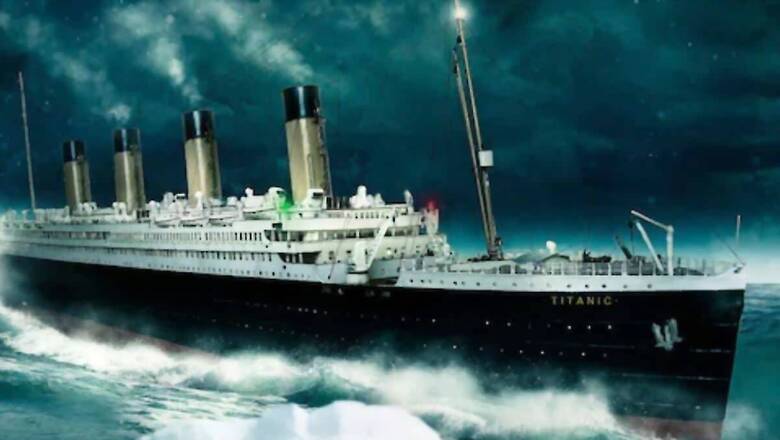
views
Do you know one surprising fact about the sinking of the Titanic? About 1500 people died, but no skeletal remains were found in the wreckage. Yes, it is true. The reasons will baffle you. We all are aware about the Titanic which was the world’s largest ocean liner, which sailed from Southampton for New York in 1912. Tragically, four days into its maiden voyage, the ship struck an iceberg in the North Atlantic Ocean. It sank on April 15, 1912, 112 years ago, causing the death of 1500 people by drowning. The surprising fact is that, even after all kinds of research since then, not a single human bone was found in its debris. Experts have revealed the specific reason for this.
The titanic incident, a tragic disaster, is frequently reported in the news due to its antique significance. It still remains in the headlines even today surrounded by numerous mysteries. One of these mysteries is the vanishing of the remains of the people who died by sinking in this accident. Its wreckage was discovered by the oceanography professor and the US Navy officer Robert Ballard using his deep-sea robot, Argos, in the year 1985 for the first time and since then, many types of investigations were done, but till now nothing is found in it.
It has been unveiled that the passage of time has contributed to the decay of bodies and their feasting by marine life. Nevertheless, one would still expect to find skeletons on the ship and on the surrounding sea floor. The absence of bones and skeletons from the Titanic is largely due to its depth. The wreck lies at approximately, 3800 metres that is 12,500 feet, below the surface, where the chemical composition of the water plays a very important role. The oceanography professor, Robert Ballad, who also explored the wreck of the Bismarck, explained after investigation that the sea water below about 914 metres, that is 3000 feet, is rich in calcium carbonate — which is a primary component of bones. At such depths, the calcium carbonate dissolves, leading to the termination and displacement of bones.



















Comments
0 comment